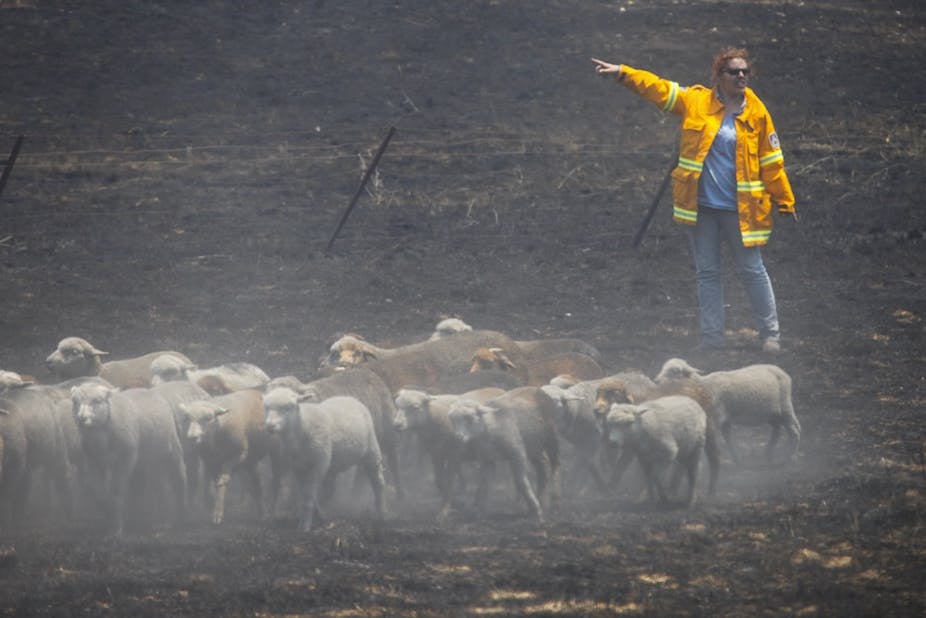When the embers have cooled or the floods have passed, who’s looking after the sustainability of small business in regional Australia?
This year’s extreme heat and dry weather have again ensured Australia’s disaster season won’t end event free, with the Bureau of Meteorology on Monday recording its hottest day on record since 1972.
With recent bushfires in Tasmania, Victoria, Queensland and New South Wales and tropical Cyclone Narelle hitting Western Australia, local communities are preparing for the worst.
Tasmania’s estimated direct loss from the current bushfires already exceeds $42 million. That disaster’s true economic impact is yet to be realised. Emergency services and volunteer organisations remain on standby across Australia for fear of a repeat of the tragic Black Saturday bushfires that claimed 173 lives, 414 injuries and the destruction of 2,100 homes.
We count deaths, injuries and the destruction of property but we also need to think about long-term impacts on regional economies. Disasters can have a crippling effect on business in small towns and regional cities. That effect isn’t fixed by emergency support for householders rather than the small businesses essential for long-term regional viability.
After initial torment from natural disasters, individuals and communities are faced with substantial clean-up and recovery efforts. They are all too often impacted by the realisation that homes, vehicles, businesses and livestock have perished. They seek to answer the question ‘how will I afford to pay for this one?’.
For most individuals, short-term help is at hand. Financial assistance under the current disaster management framework is available through the Commonwealth’s Australian Government Disaster Recovery Payment (AGDRP). Assistance consists of a one-off payment of $1,000 per eligible adult and $400 per eligible child over the age of 16. The payments – activated by Emergency Management Minister Nicola Roxon on the advice of the Attorney-General’s Department – provide easily accessible disaster assistance for individuals to meet the immediate impacts of a disaster.
In addition to assistance provided through the AGDRP, personal hardship and distress payments for individuals are often made available under Category A of the joint Commonwealth-State Natural Disaster Relief and Recovery Arrangements (NDRRA).
However, with assistance focusing on the individual, small business and primary producers are often left to “weather the storm”. Queensland local government is calling for disaster assistance reform to reduce burdens imposed by the very assistance seeking to alleviate burdens from disaster itself. It’s a call worth considering if we are serious about national resilience and regional sustainability, terms in media releases often not put into practice on a coherent national basis.
Under the current disaster assistance measures, small businesses have been known to slip through the cracks through funding delays, arbitrary rules and ambiguous information – as evident during the 2012 Queensland floods. Implications that are currently evident in Tasmania, with the Commonwealth and State government yet to activate disaster assistance for local businesses.
Despite a framework that is meant to cater for small business under Category B of the NDRRA, businesses themselves are limited to assistance in the form of further debt – albeit at a concessional interest rate – hard-to- come-by grants and the burdens of bureaucracy within government departments. Previous responses to catastrophes and their effects on business, primary producers and social infrastructure have been ad hoc, begging the question as to whether further Commonwealth measures are merited.
A national approach to small business disaster assistance is necessary. The Commonwealth has the resources. It’s also necessary because of jurisdictional discrepancies. Encouragement for people to get back on their feet – and stay upright – shouldn’t depend on where your business and community are located.
What we need for starters is a national dialogue about preparing for emergencies and about recovery. Resilience isn’t a matter of welfare or growth of a national disasters bureaucracy. Instead, it involves tough strategic thinking and a willingness to consider economic and social sustainability. If the small businesses disappear with the cyclone, flood or fire there may be little point rebuilding houses and schools. Resilience may mean innovative support for regional small business in the first years after a disaster … support that makes economic sense.
Let’s not be afraid to ask some questions. Should we ensure small businesses and primary producers have access to one-off non-means tested assistance similar to that for individuals? Is episodic Commonwealth spending on infrastructure a good substitute for essential (but less headline-grabbing) post-disaster assistance to small business?
All governments have embraced rhetoric about disaster resilient communities. With pundits and parliamentarians going back to work amid smoke from the regions it’s time to be creative. Ms Roxon – responding to her predecessor’s biting criticisms - has taken shaky steps towards disaster resilience.
Let’s talk about sustaining communities - and not just resilient communities - after the flames and media releases have disappeared.

